| Date | Text | |
|---|---|---|
30 Nov 1944

Salvador Edward Luria |
Salvador Edward Luria (biology) Salvador Edward Luria and Alfred Day Hershey independently recognize that viruses undergo mutations. |
|
30 Nov 1944
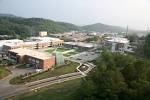
Oak Ridge National Laboratory |
Oak Ridge National Laboratory (chemistry) A team at Oak Ridge National Laboratory led by Charles Coryell discovers chemical element 61, the only one still missing between 1 and 96 on the periodic table, which they will name promethium. Found by analysis of fission products of irradiated uranium fuel, its discovery is not made public until 1947. |
|
30 Nov 1944

Dorothy Hodgkin |
Dorothy Hodgkin (chemistry) Dorothy Hodgkin and C. H. (Harry) Carlisle publish the first three-dimensional molecular structure of a steroid, cholesteryl iodide. |
|
30 Nov 1944
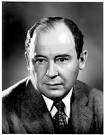
John von Neumann |
John von Neumann (computer science) June 30 - Distribution of John von Neumann's First Draft of a Report on the EDVAC, containing the first published description of the logical design of a computer with stored-program and instruction data stored in the same address space within the memory (von Neumann architecture). |
|
30 Nov 1944
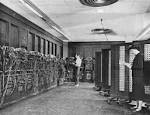
ENIAC |
ENIAC (computer science) November - Assembly of the world's first general purpose electronic computer, the Electronic Numerical Integrator Analyzer and Computer (ENIAC), is completed in the United States, covering 1,800 square feet (170 m) of floor space, and the first set of calculations is run on it. |
|
30 Nov 1944
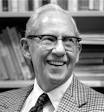
George Stigler |
George Stigler (mathematics) George Stigler solves the Stigler diet problem heuristically. |
|
30 Nov 1944
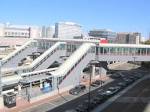
Stamford, Connecticut |
Stamford, Connecticut (medicine) February - Raymond L. Libby of American Cyanamid's research laboratories at Stamford, Connecticut, announces a method of orally administering the antibiotic penicillin. |
|
30 Nov 1944
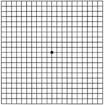
Amsler grid |
Amsler grid (medicine) The Amsler grid is introduced for monitoring of the central visual field. |
|
30 Nov 1944
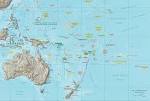
Pacific |
Pacific (meteorology) High-altitude west-to-east winds across Pacific, discovered by Japanese in 1942 and by Americans in 1944, are dubbed "jet stream". |
|
30 Nov 1944
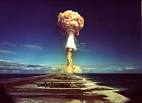
Nuclear testing |
Nuclear testing (physics) July 16 - Nuclear testing: The Trinity test, the first test of an atomic bomb, using 6 kilograms of plutonium, succeeds in detonating an explosion equivalent to that of 20 kilotons of TNT. |
|
30 Nov 1944

Atomic bombings of Hiroshima and Nagasaki |
Atomic bombings of Hiroshima and Nagasaki (physics) August 6 & 9 - Atomic bombings of Hiroshima and Nagasaki make the world aware of the power of nuclear weapons. |
|
30 Nov 1944

Smyth Report |
Smyth Report (physics) August 11 - Smyth Report released by the United States government, informing the public of the basics of nuclear fission and its military and civilian applications, and emphasizing the role played by physics in the development of the atomic bomb. |
|
30 Nov 1944
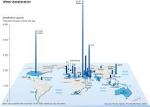
desalination |
desalination (technology) The first desalination plant becomes operational. |
|
30 Nov 1944
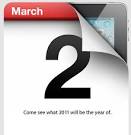
March 2 |
March 2 (technology) March 2 - The Bachem Ba 349 Natter is launched from Stetten am kalten Markt. The Natter is the first manned rocket, developed as an anti-aircraft weapon. The launch fails and the pilot dies. |
|
30 Nov 1944

Arthur C. Clarke |
Arthur C. Clarke (technology) October - Arthur C. Clarke puts forward the idea of a geosynchronous communications satellite. |
|
30 Nov 1944
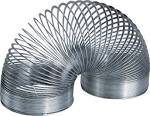
Slinky |
Slinky (technology) November - Slinky toy first demonstrated by engineer Richard T. James in Philadelphia. |
|
30 Nov 1944
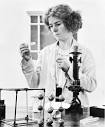
Kathleen Lonsdale |
Kathleen Lonsdale (institutions) Kathleen Lonsdale and Marjory Stephenson become the first women elected as Fellows of the Royal Society of London. |
|
30 Nov 1944
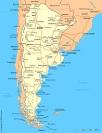
Argentine |
Argentine (publications) Argentine physicist Ernesto Sabato publishes Uno y el Universo ("One and the Universe"), a collection of essays criticizing the apparent moral neutrality of science and warning of dehumanization in technological societies. |
|
30 Nov 1944

John Krebs |
birth John Krebs April 11 - John Krebs, English zoologist. |
|
30 Nov 1944
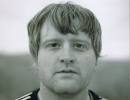
Mike Smith |
birth Mike Smith April 30 - Mike Smith (killed 1986), American astronaut. |
|
30 Nov 1944

John McAfee |
birth John McAfee September 18 - John McAfee, Scottish American computer programmer. |
|
30 Nov 1944
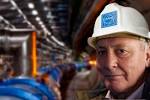
Lyn Evans |
birth Lyn Evans Undated - Lyn Evans, Welsh physicist. |
|
30 Nov 1944
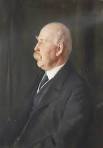
Napier Shaw |
death Napier Shaw March 23 - Napier Shaw (born 1854), English meteorologist. |
|
30 Nov 1944

Isis Pogson |
death Isis Pogson May 14 - Isis Pogson (born 1852), English astronomer and meteorologist. |
|
30 Nov 1944

Gerhard Gentzen |
death Gerhard Gentzen August 4 - Gerhard Gentzen (born 1909), German mathematician. |
|
30 Nov 1944
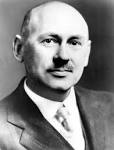
Robert Goddard |
death Robert Goddard August 10 - Robert Goddard (born 1882), American rocket scientist. |
|
30 Nov 1944
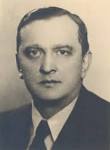
Stefan Banach |
death Stefan Banach August 31 - Stefan Banach (born 1892), Polish mathematician. |
|
30 Nov 1944

Walter Bradford Cannon |
death Walter Bradford Cannon October 1 - Walter Bradford Cannon (born 1871), American physiologist. |
|
30 Nov 1944

Hans Geiger |
death Hans Geiger September 24 - Hans Geiger (born 1882), German inventor of the Geiger counter. |
|
30 Nov 1944

Thomas Hunt Morgan |
death Thomas Hunt Morgan December 4 - Thomas Hunt Morgan (born 1866), American biologist. |
|
30 Nov 1944
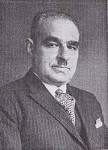
Arthur Korn |
death Arthur Korn December 21/22 - Arthur Korn (born 1870), German-born inventor. |
|
31 Mar 1945
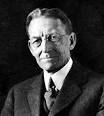
Lewis Ralph Jones |
death Lewis Ralph Jones Died 31 Mar 1945 at age 80 (born 5 Dec 1864). U.S. botanist and agricultural biologist who was one of the first and most distinguished of American plant pathologists. Jones began his career at a time when his specialty, plant pathology, was emerging as an offshoot of mycology, plant therapeutics, and bacteriology. He was always on the research frontier of each new development, and he has been credited with initiating interest in the environmental aspects of plant pathology. He pioneered in the use of Bordeaux mixture in the US. He began what became a 20-year experimental program of spraying various mixtures on different varieties of potatoes. For the Department of Agriculture he searched in Europe for disease-resistant potatoes. He also carried out fundamental studies on the bacterial soft rot of carrots and other vegetables. Although his work tended to focus on the diseases of economically important plants, the results were also contributions to basic science. His studies made possible a much greater control of potato diseases and a resulting increase in yield. |
|
31 Mar 1945

Hans Fischer |
death Hans Fischer Died 31 Mar 1945 at age 63 (born 27 Jul 1881). German biochemist who was awarded the Nobel Prize for Chemistry in 1930 for research into the constitution of haemin, the red blood pigment, and chlorophyll, the green pigment in plants and especially for his synthesis of haemin (1929), non-protein part of haemoglobin that gives blood its red colour. He further showed that chlorophylls are porphyrins and that they share a similar structure with haemin, but with subtle differences. Following the destruction of his laboratory during WWII air raids, dispair led to suicide, just one month before Germany surrendered. |
|
31 Mar 1945

Harriet Ann Boyd Hawes |
death Harriet Ann Boyd Hawes Died 31 Mar 1945 at age 73 (born 11 Oct 1871). American archaeologist and social activist who gained renown for her discoveries of ancient remains in Crete. She went to Crete in 1900, and with the encouragement of Arthur Evans, began to excavate a Minoan site at Kavousi where she discovered some Iron Age Tombs. From 1901-05 she led a large team that excavated the early Bronze Age Minoan town of Gournia, becoming the first woman to head a major archaeological dig. As a community of humble artisans, Gournia was of particular interest to archaeologists, complementing as it did the more elaborate palaces being unearthed at Knossos and elsewhere. In 1908 she published her monumental work on Gournia. During WW I she went to Corfu to help nurse the Serbians (1916). |
|
25 Apr 1945
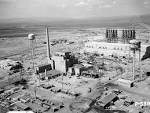
Manhattan project |
Manhattan project In 1945, the new U.S. President, Harry S. Truman was briefed on the status of the atomic bomb project. Within 24 hours of Roosevelt's death on 12 Apr 1945, Truman had been told briefly about the atomic bomb project by Secretary of War, Henry Stimson. In this more extensive briefing on 25 Apr, Stimson, with General Groves's assistance, gave Truman information that the uranium-235 gun design had been frozen, but sufficient uranium-235 would not be accumulated until around 1 Aug. Enough plutonium-239 would be available for an implosion assembly to be tested in early July; a second would be ready in August. eb |
|
30 Apr 1945
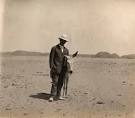
David Randall-MacIver |
death David Randall-MacIver Died 30 Apr 1945 at age 71 (born 31 Oct 1873). English-American archaeologist and anthropologist who excaved in Egypt and Sudan. He began his career of excavation with Sir Flinders Petrie at Abydos, Egypt (1899-1901). After conducting excavations of the Great Zimbabwe ruins in Southern Rhodesia (now Zimbabwe), Randall-MacIver wrote Medieval Rhodesia (1906), in which he contended that the ruins were not built by an ancient and vanished white civilization as was currently believed but were of purely African 14th century origin (as confirmed by later archaeological study). Walls at these ruins stood as high as 32 feet over the surrounding savanna. From 1907 to 1911 Randall-MacIver led an expedition into Egypt and the Sudan. |
|
29 May 1945
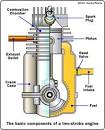
Two cycle gas engine |
Two cycle gas engine In 1945, a two-cycle gas engine was patented by black American inventor F.M. Jones (U.S. No. 2,376,968). His first patent was for a ticket dispensing machine (1939), but in the next twenty years Jones produced numerous inventions to patent related to refrigeration and air conditioning for trucks and railway boxcars with their associated engines, compressors and control devices. He solved the problems for truckers hauling poultry and other perishables troubled by packing ice melting away during a trip. Jones combined a knowledge of shock-proofing and engine building from building racing cars in his youth with a study of refrigeration from library books. Later, he designed all Army and Marine field kitchen refrigeration systems. |
|
13 Jul 1945

First atomic bomb |
First atomic bomb In 1945, the first atomic bomb arrived partly assembled at its test site in the New Mexico desert, on this Friday the 13th. By Sunday, it was completed and set at the top of a tower waiting for the first atomic bomb test the next day. On Monday 16 Jul 1945, it was successfully exploded and the nuclear era began. A mere 21 more days later, the world’s first deployed atomic bomb was dropped on Hiroshima, Japan. |
|
03 Oct 1945
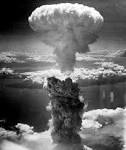
Atomic bomb security |
Atomic bomb security In 1945, following a message from President Truman, a bill sponsored by the war department and known as the May-Johnson bill was introduced into the U.S. Congress. The purpose of this bill was to keep the atomic bomb a secret under stringent security restrictions. Because it failed to provide for the sharing of information with foreign countries, and granted a dominant role to the military, scientists throughout the country were galvanized in opposition. Due in part to lobbying by scientists such as Leo Szilard and other groups, the May-Johnson Bill was tabled in December. The McMahon Act, signed on 1 Aug 1946, mandated civilian control of atomic energy under the auspices of the Atomic Energy Commission (AEC). |
|
13 Oct 1945

Milton Snavely Hershey |
death Milton Snavely Hershey Died 13 Oct 1945 at age 88 (born 13 Sep 1857). American manufacturer who founded the Hershey Chocolate Corporation. Apprenticed to a confectioner until 1876, he then opened his own candy shop in Philadelphia, Penn. Though that venture was unsuccessful, a few years later, he innovated the production of caramels by using fresh milk, with great success. In the 1890's he diversified into chocolate, and in 1903 began building what became the world's largest chocolate manufacturing plant. That site became Hershey, Pennsylvania. He used his fortune philathropically. (eb) |
|
29 Oct 1945
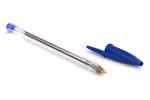
First ballpoint pen |
First ballpoint pen In 1945, the first ball point pen in the U.S. went on sale at Gimbels Department Stores for $12.95. In Jun 1945, Chicago businessman Milton Reynolds, during a visit to Buenos Aires, Argentina, saw Laszlo Biro’s pen in a store, realized the pen’s sales potential and bought a few as samples. He returned to the U.S., and designed a copy in four months. He began production of his Reynolds’ Rocket pen, ignoring the patent rights of the Argentine manufacturer, Eversharp Co. On the first day of sale, $100,000 worth of his pen were sold. The initial success of Reynolds’ ballpoint pen as a fad did not last. It leaked and was unreliable. By 1948, the price fell below 50 cents. By 1951, his enterprise had failed. |
|
16 Nov 1945

New elements |
New elements In 1945, two newly discovered elements were announced: americium (atomic number 95) and curium (atomic number 96).*Americium, named after the Americas, can be produced from intense neutron irradiation of pure plutonium. Problems involved in the extraction of americium include the recovery of the expensive starting material and the removal of hazardous fission products that are formed simultaneously in amounts comparable to the amounts of the element itself. It was discovered by Glenn Seaborg, James, Morgan and Albert Ghiorso in Chicago, U.S.A. It is used as a portable source for gamma radiography, and in smoke detectors. Curium, a byproduct of americium, was named in honour of Pierre and Marie Curie. |
|
20 Nov 1945

Francis William Aston |
death Francis William Aston Died 20 Nov 1945 at age 68 (born 1 Sep 1877). English chemist, physicist and chemist who was awarded the 1922 Nobel Prize for Chemistry for his development of the mass spectrograph, a device that separates atoms or molecular fragments of different mass and measures those masses with remarkable accuracy. In 1910 he became an assistant to Sir J.J. Thomson at Cambridge, who was investigating positively charged rays emanating from gaseous discharges. Aston invented his mass spectrograph (a new type of positive-ray apparatus) after WWI, with which he showed that many elements are mixtures of isotopes. In fact, he discovered 212 of the 287 naturally occurring nuclides. The mass spectrograph is now widely used in geology, chemistry, biology, and nuclear physics. |